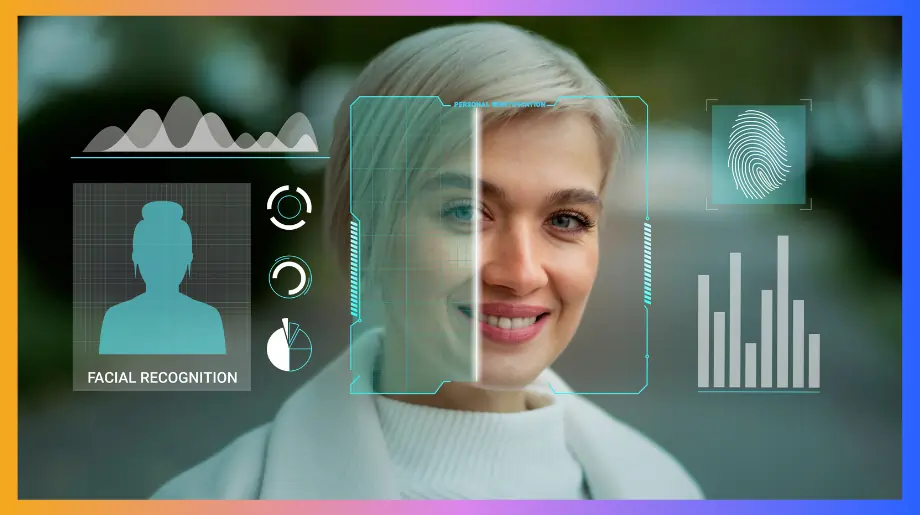Cyber attacks keep getting smarter. Fraudsters are using AI to break weak authentication. Your customer data is under constant attack. Growing businesses can't ignore these threats anymore. That's why CIAM has become absolutely essential.
Traditional customer identity and access management solutions create new problems. They take months to implement. Technical teams struggle with complex setups. Costs spiral out of control.
The best CIAM solutions for growing businesses prioritize speed over features. Small teams need systems that work immediately. Fast-scaling companies require predictable pricing models.
Modern authentication should enhance growth, not block it. Your customers deserve smooth experiences. Your business needs reliable security.
Here are 10 CIAM platforms that master user experience and security in 2025.
What is Customer Identity and Access Management (CIAM) Software?
CIAM software manages customer logins across all your digital services.
It provides personalized, seamless experiences while maintaining strict security through multi-verification and adaptive, risk-based authentication.
Customer Identity and Access Management solutions turn complicated experiences into simple clicks.
The following capabilities drive real business results:
- Single Sign-On eliminates friction that causes cart abandonment
- Social Login converts visitors in seconds instead of minutes
- Mobile Optimization captures the growing mobile commerce market
- Self-Service Features reduce support costs while improving satisfaction
- Scalable Architecture handles traffic spikes during peak sales periods
- Advanced Security protects customer data while maintaining smooth experiences
10 CIAM Solutions to Solve Your Security Challenges in 2025
You need something that mixes safety with easy use. These CIAM vendors have different answers for different business needs. Let's look at what makes each solution stand out.
1. Infisign CIAM (UniFed)
You need security that works fast and costs less. Infisign UniFed delivers exactly that promise. Your complete CIAM system goes live in 4 hours. Zero-breach architecture protects customers from day one. Tenant-based pricing keeps costs predictable when you scale. You get enterprise security with startup speed today.

Key Features:
- Fast Deployment. Your complete CIAM system goes live in 4 hours. Zero setup delays protect customers right away. You start securing revenue on day one.
- Passwordless Access. Biometric authentication, FIDO2/WebAuthn, magic links, and device passkeys eliminate password vulnerabilities. Zero-knowledge proof technology provides phishing-resistant security. No more support calls about forgotten passwords.
- Adaptive Security. MFA adjusts based on real-time risk assessment. Normal users get smooth access experiences. Suspicious activity triggers extra protection without user friction.
- Universal SSO. One login gives customers access to everything. Web apps, mobile platforms, and APIs connect without problems. Single sign-on works across your entire ecosystem.
- Login Thresholds+ IP Throttling: These two features make brute force attacks a lot less likely to succeed - reducing the burden on authentication frameworks.
- AI-Powered Tenant Management. Add and remove tenants with AI-powered access controls. Automated provisioning handles user lifecycle management without manual work. Smart tenant isolation maintains security across multiple organizations.
- Easy and unlimited Directory Sync. Import customer data from multiple existing directories. HRIS integration synchronizes employee data without problems. No extra charges for data migration or sync processes.
- Easy Integration. Complete APIs and SDKs for existing tool integration. Works with your current coding platforms perfect. Tech stack connects without extra development work required.
Pros:
- SSO works on legacy and on-premises apps. Old systems get modern login without upgrades.
- No hidden costs on advanced security features. MFA and encryption come included free.
- Connects with all your current business tools easily.
- AI-powered features boost efficiency and security. Smart algorithms handle access management automatically.
- Pioneers passwordless SSO using Zero Knowledge Proofs. Login happens without sharing personal information.
Cons:
- Passwordless authentication uses the platform's secure vault system. Works through integrated password management.
2. Auth0
Auth0 works for developer teams who need customization options. Owned by IAM provider Okta, this CIAM platform offers control over login systems. The flexibility comes with complexity that demands technical expertise and higher costs.

Key Features:
- Custom Everything: Modify login screens to match brand requirements
- Developer Focus: Developer-friendly integration with any technology stack and programming language.
- Security Features: Protection against common attacks and threat
- App Connections: Links to business applications (setup required)
- Smart Authentication: Multi-factor protection with risk assessment
Pros:
- Developer Focus Documentation and APIs for various programming languages
- Complete control over login screens and user experience design.
- Bot detection and brute-force protection included for security.
- Supports SAML, OAuth 2.0, and OpenID Connect protocols.
Cons:
- Costs go up fast with monthly active users growth patterns.
- Feature-rich interface feels cluttered for new users.
- Support responsiveness varies for non-enterprise plans.
3. Microsoft Entra External ID
Microsoft's identity solution works within their ecosystem. Free tier covers 50,000 monthly users, then per-user pricing begins. Best suited for companies using Microsoft products.

Key Features:
- Microsoft Integration: Works with Office, Teams, and Azure services
- AI Security: Machine learning for threat detection and risk analysis capabilities.
- Free Tier: 50,000 monthly users, then usage-based pricing
- Partner Access: Temporary access for business partners
Pros:
- Free tier provides 50,000 monthly active users at no cost.
- Perfect integration with Office 365 and Azure services included.
- Machine learning for threat detection
- Handles millions of users and billions of authentications every day.
Cons:
- Pricing becomes unpredictable during renewals and costs go up fast.
- Delays in profile and password updates with local AD.
- Works best only within the Microsoft ecosystem creating vendor lock-in.
4. Frontegg
Frontegg targets B2B SaaS companies. This CIAM tools provider offers admin dashboards for customer self-service. Integration takes time and costs can go up with usage patterns.

Key Features:
- B2B Focus: Multi-tenant support for business customers
- Self-Service: Customer admin dashboards reduce support tickets for users.
- Integration: User management setup requires development work
- Access Control: Role-based access for business workflows
Pros:
- Built for B2B SaaS company needs and requirements.
- Customer admin portals reduce support tickets
- Faster implementation for B2B use cases reducing development requirements.
Cons:
- Costs increase fast with customer growth patterns at scale.
- Limited effectiveness for B2C applications designed for business scenarios.
5. Google Cloud Identity
Google's platform handles large user volumes using their infrastructure. The pay-per-active-user model works for some businesses. Performance depends on Google ecosystem integration.

Key Features:
- Large Scale: Handles millions of users using Google infrastructure.
- Usage Pricing: Pay only for active monthly users with transparent pricing.
- AI Features: Machine learning algorithms for threat detection with advanced security.
- Firebase Link: Integration with Google mobile development
Pros:
- Handles high user volumes.
- Machine learning for security analysis
Cons:
- Costs become too high for massive user bases with pricing.
- Deep integration makes switching hard and performance suffers.
6. PingOne CIAM
PingOne offers visual workflow building without coding. Starting price of $20,000 per year targets enterprise customers. Interface complexity can challenge non-technical users.

Key Features:
- Visual Builder: Drag-and-drop interface for non-technical teams without coding requirements.
- Identity Verification: Document verification for account validation
- Risk Analysis: Behavioral analysis for suspicious activity detection through document validation.
- Workflow Visibility: Granular access control for large organizations with journey tracking.
Pros:
- Behavioral detection for suspicious activity
- User journey tracking and analysis
Cons:
- Visual builder can be confusing for new users.
- Features and pricing target only enterprise customers.
- Interface navigation can be confusing
7. IBM Security Verify
IBM Security Verify applies AI to identity management with learning algorithms. System complexity requires technical expertise for setup and maintenance. Higher costs than simpler alternatives.

Key Features:
- AI Analysis: Machine learning algorithms for sophisticated threat detection with dashboards.
- Hybrid Support: Works with both cloud and on-premises systems for deployment.
- Privacy Compliance: GDPR and privacy law handling built-in with comprehensive capabilities.
- Security Analytics: Real-time threat monitoring dashboards
Pros:
- Machine learning for login threat detection
- Cloud and on-premise system compatibility
Cons:
- Demands major technical expertise for implementation.
- More expensive than simpler identity solutions excluding smaller organizations.
- Advanced features require extensive training unsuitable for teams.
8. CyberArk
CyberArk focuses on maximum security for regulated industries. Banks and government agencies use this CIAM vendors solution for sensitive data protection. Complexity and cost make it unsuitable for most businesses.

Key Features:
- Zero Trust: Multi-level verification for all access requests
- Admin Security: Enhanced protection for privileged accounts
- Session Monitoring: Enhanced security for administrative accounts with advanced session monitoring.
- Threat Data: Session recording and analysis capabilities with global threat intelligence.
Pros:
- Global intelligence for attack prediction
- Recording and analysis of user sessions
- Designed for banks and government agencies with zero trust.
Cons:
- Too much complexity for small and medium businesses designed for enterprises.
- Enterprise-level pricing excludes most organizations with high standard costs.
- Demands specialized knowledge for setup and maintenance unsuitable for business.
9. OneLogin CIAM
OneLogin provides basic identity management for mid-sized companies. Covers standard requirements without advanced features. Limited customization options restrict flexibility.

Key Features:
- Multi-Channel: Consistent experience across platforms
- Social Logins: Uniform login experience across all platforms with social integration.
- Session Management: Automatic logout and cross-app session control
Pros:
- Easy management for basic identity needs with an intuitive dashboard.
- Sign-up with popular social media accounts
- Works well with Active Directory and LDAP for control.
Cons:
- Fewer customization options than enterprise platforms.
- Less user-friendly when working remotely requiring phone pairing.
- Limited compared to comprehensive platforms unsuitable for complex needs.
10. Amazon Cognito
Amazon Cognito works within AWS infrastructure only. Serverless approach reduces management overhead but limits flexibility. Pay-per-use pricing can become expensive with growth.
Key Features:
- AWS Integration: Seamless connection to Amazon cloud services with direct infrastructure.
- Serverless: No server infrastructure to maintain with automatic scaling included.
- Temporary Access: Short-lived permissions for security
- Mobile Support: iOS and Android app development capabilities for mobile applications.
Pros:
- No server management required
- Direct connection to Amazon cloud services
Cons:
- Poor functionality beyond Amazon infrastructure creating a vendor lock-in ecosystem.
- Pricing becomes expensive with user growth using unpredictable models.
- Works only within the AWS ecosystem unsuitable for diverse needs.
What are the Benefits of Using CIAM solution?
Your competitors lose customers because of poor login experiences. Those frustrated customers look for better solutions right now. You can become that better choice starting today.
CIAM tools turn frustrated visitors into loyal buyers. Smart business owners use these tools to grow faster. CIAM benefits make the difference between winning and losing companies.
Here's what you get right away
- Better Security from Malicious Attacks. CIAM solutions use OAuth, SAML, and OpenID Connect with multi-factor authentication to block threats.
- Better User Experience. Single sign-on and passwordless authentication methods reduce friction while social logins personalize user interactions.
- Control All User Access. SAML and OAuth protocols unify authentication with role-based access control and real-time monitoring.
- Better Compliance. AES-256 encryption and AWS Cognito integration ensure CIAM compliance with GDPR and HIPAA automatically.
- Better Visibility. Real-time analytics and behavioral monitoring enhance visibility into user behavior and app performance, helping optimize security responses and user experience.
- Better Customization. Authentication workflows adapt to business needs while maintaining security through enterprise system integration.
What Are the Key Features to Look For in a Modern CIAM Solution?
Picking the wrong customer identity and access management platform is like buying a car that breaks down every week. Your customers get angry. You lose sales. Nobody wins.
So what should you actually look for? These core functionalities determine whether customers will successfully engage with your product or abandon the onboarding process:
- Adaptive Security Controls. Risk-based authentication adjusts security measures automatically. Normal users get smooth experiences. Suspicious activity triggers extra protection. Strong MFA adds security layers through multiple verification methods.
- Easy User Experience. Single sign-on opens all services with one login. Device passkeys and passwordless authentication methods replace traditional passwords completely.
- Social Identity Integration. Customers use existing social accounts. Google and Facebook logins reduce registration time. No new passwords to remember. Higher conversion rates follow smooth sign-ups.
- Developer-Friendly APIs. Complete APIs connect with existing tools. SDKs work with current coding platforms. Technical teams integrate without extra development work. Documentation makes setup simple.
- Automated User Provisioning. The system handles user lifecycle management automatically. New users get access without manual work. De-provisioning removes access when needed. IT teams focus on strategic tasks.
- Universal Directory. Centralized view shows all user identities. Customer data imports from multiple sources. A single location manages all information.
- Compliance and Affordability. Built-in CIAM compliance with GDPR and HIPAA automatically. Predictable pricing models control costs. Pay-per-tenant options save money during growth.
A Complete CIAM Solution for Digital Journeys
Your customers touch your brand through websites and mobile apps. Support systems and partner portals connect them too. A complete customer identity and access management solution creates smooth experiences. Every touchpoint works together.
Modern businesses need more than basic login systems. You need platforms that grow with your company. These platforms adapt to changing customer expectations.
Infisign UniFed is the top CIAM solution your business needs. Other platforms take months to implement. They cost thousands monthly. Infisign UniFed goes live in 4 hours. You get predictable tenant-based pricing.
Why Infisign UniFed stands out as the complete CIAM solution:
- 4-Hour Deployment. Your complete system protects customers while competitors plan their security setup
- Smart Tenant Pricing. Pay per business tenant, not per user - costs stay predictable as you grow rapidly
- Zero-Trust Architecture. Built-in enterprise security from day one without complex configuration requirements
- Universal Integration. APIs and SDKs connect with your existing tech stack without development headaches
- Passwordless Authentication. Device passkeys and biometric login eliminate password support calls completely
- Automated Provisioning. SCIM provisioning and directory sync handle user management without additional charges
Ready to transform your customer authentication experience?
Book a demo today to see how Infisign UniFed can protect your customers in just 4 hours.
FAQs
What Do CIAM Solutions Do?
CIAM solutions manage customer identities across all your digital properties. They handle user registration and login processes. Password resets and security monitoring work automatically. These systems help customers access your services. Bad actors stay out with smart protection.
The platforms connect with websites and mobile apps. Business APIs integrate without problems. Social logins make sign-ups fast and simple. Secure authentication protects customer data. Modern identity management features work behind the scenes. Advanced solutions detect fraud before it happens. Customer analytics show how users behave.
What is the difference between IAM and CIAM?
The differences between IAM and CIAM are:
IAM software focuses on employees and internal users within your organization. These systems manage worker identities, job roles, and access permissions. They emphasize security controls and administrative features for IT teams.
CIAM software targets external customers and business partners instead. They prioritize user experience and self-service capabilities. Features include social authentication, privacy consent management, and customer journey analytics.






















